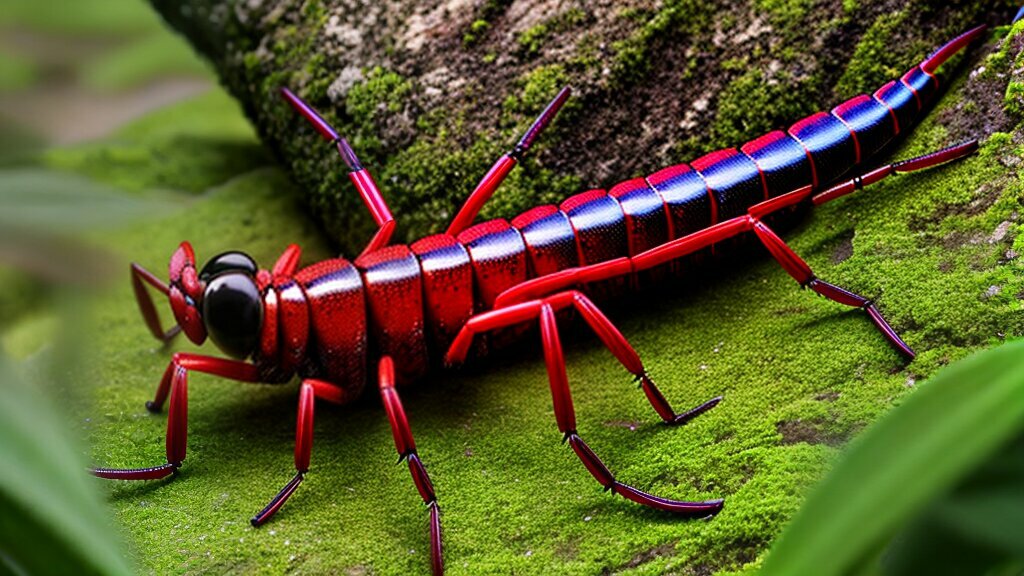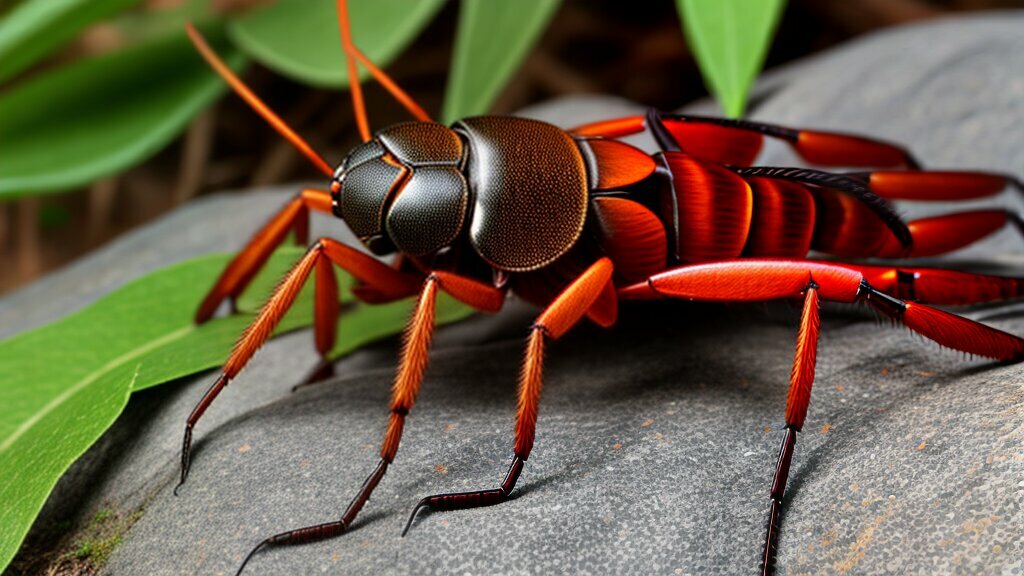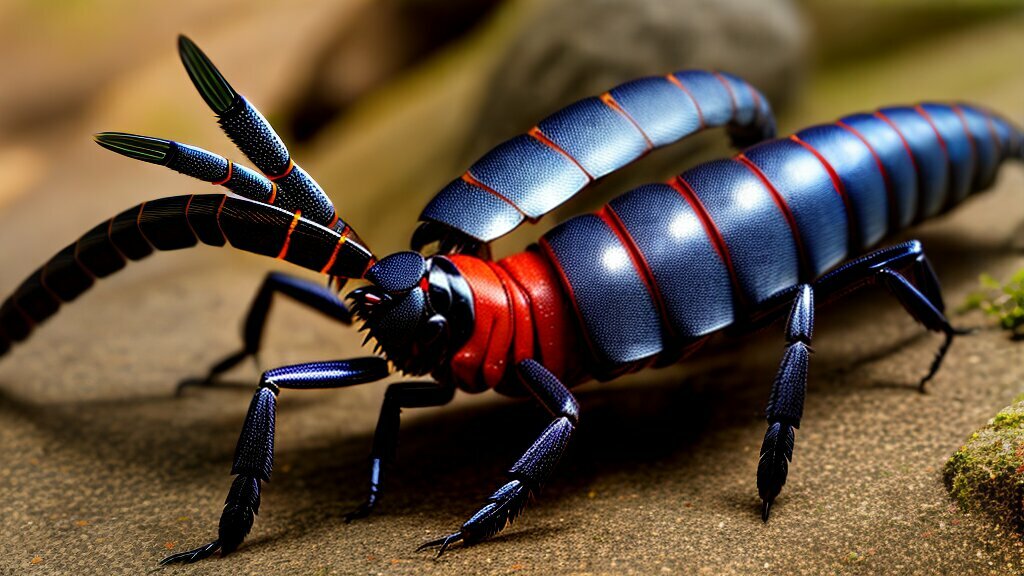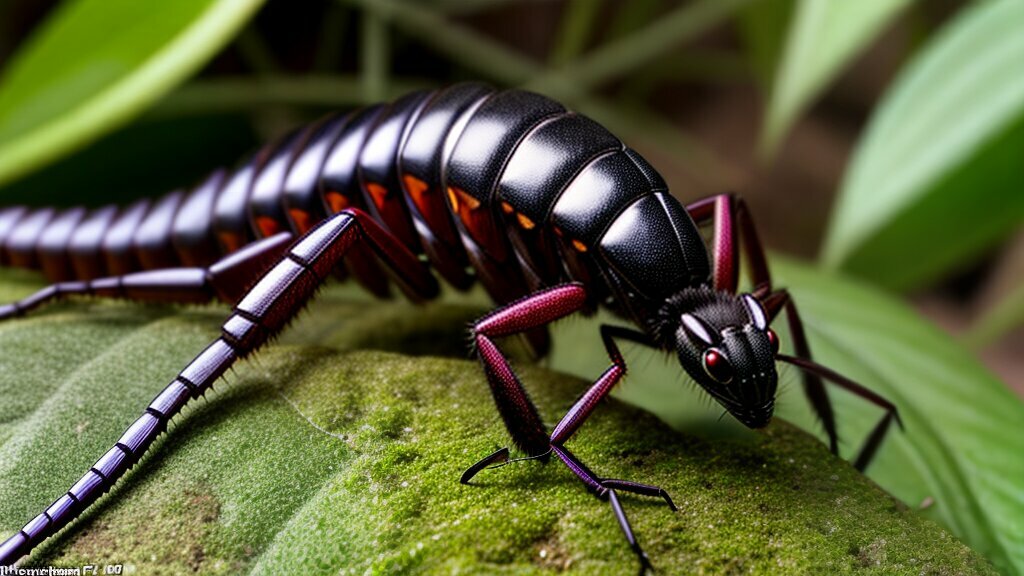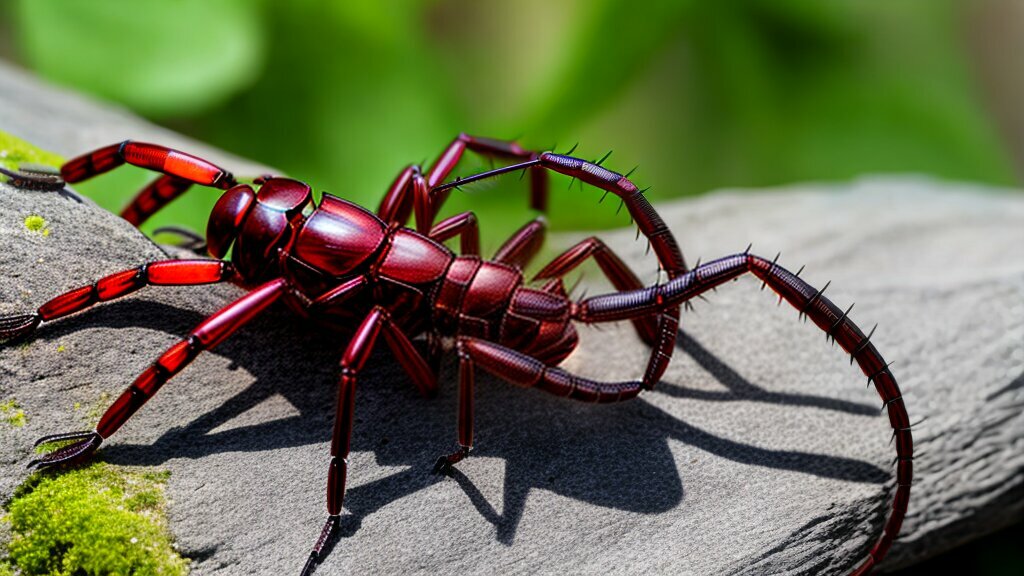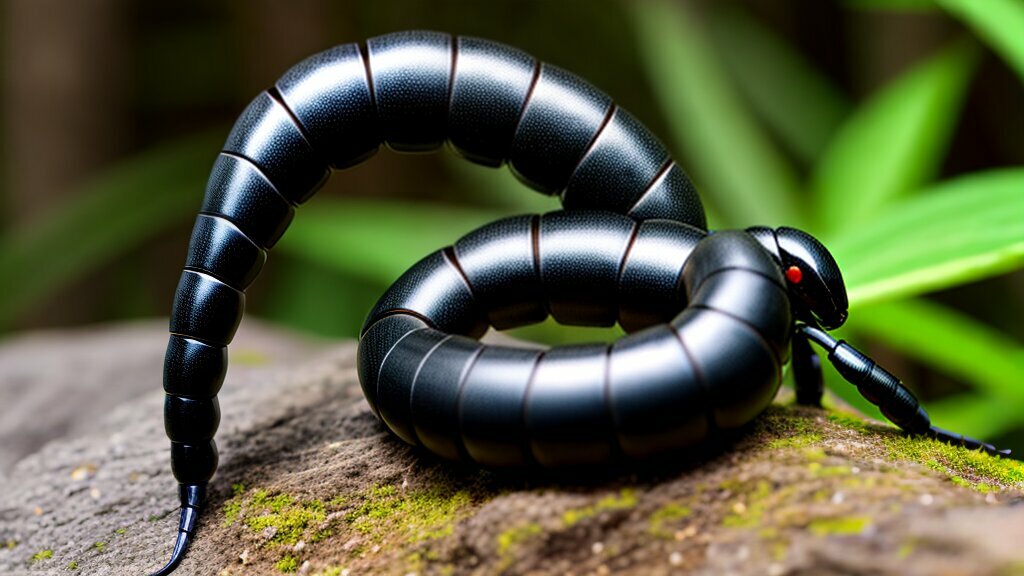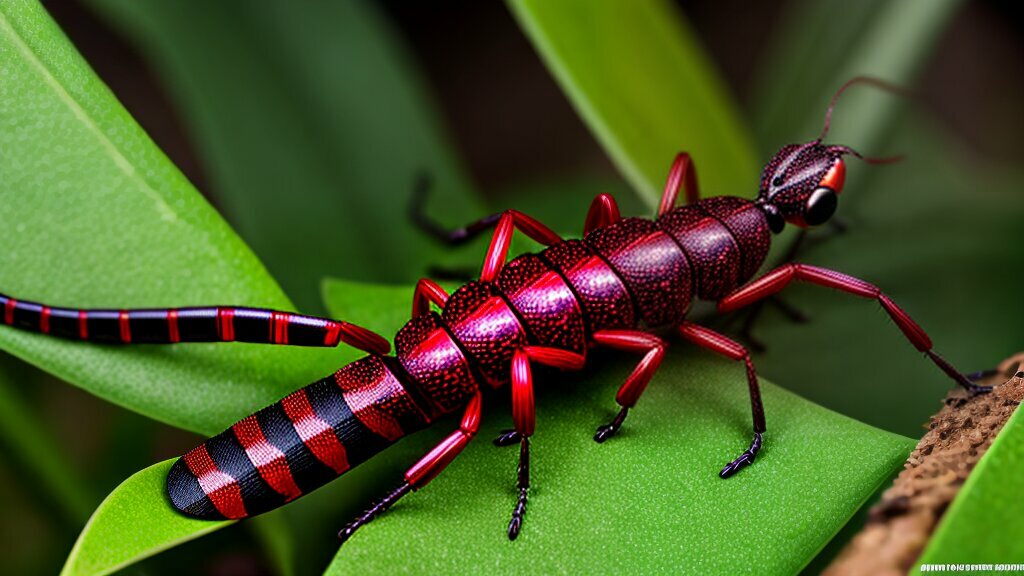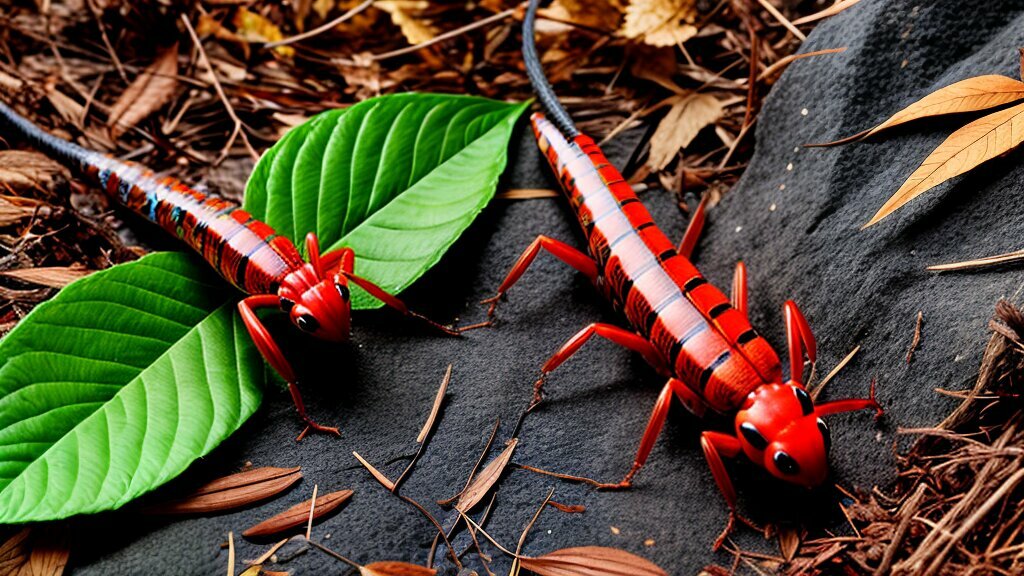Scolopendra sp. centipedes are some of the most intriguing and awe-inspiring creatures in the animal kingdom. With their many legs and venomous bites, they strike a balance between fear and fascination in the hearts of humans.
These arthropods belong to the genus Scolopendra, which contains over 600 species of centipedes. Their name comes from the Greek word “skolopendra,” meaning “insect with many legs.” These creatures can be found across the world, inhabiting a variety of environments, from rainforests to deserts.
In this article, we will delve deeper into the world of Scolopendra sp. centipedes, exploring their classification, habitat, behavior, diet, anatomy, venom, and potential medicinal properties. Join us on this journey of discovery as we uncover the mysteries of these fascinating creatures.
Key Takeaways
- Scolopendra sp. centipedes are fascinating creatures that belong to the genus Scolopendra, containing over 600 species.
- They can be found across the world in various environments, from rainforests to deserts.
- Throughout this article, we will explore their classification, habitat, behavior, diet, anatomy, venom, and potential medicinal properties.
Understanding Scolopendra Classification and Diversity
Scolopendra sp. centipedes belong to the family Scolopendridae, which includes over 800 species. The genus Scolopendra itself has a diverse range of centipedes that vary in size, color, and morphology.
The classification of Scolopendra species is primarily based on morphological characteristics, such as the number of leg-bearing segments, the number of antennal articles, and the presence or absence of certain structures like forcipules or maxillipeds.
Classification of Scolopendra sp.
| Scolopendra species | Common name | Distribution |
|---|---|---|
| Scolopendra gigantea | Giant centipede | Tropical South America and the Caribbean |
| Scolopendra subspinipes | Tiger centipede | Asia, Hawaii, and parts of Australia |
| Scolopendra morsitans | Eastern bark centipede | Africa, the Middle East, and southern Asia |
Moreover, recent research has suggested that genetic markers can also be used to classify Scolopendra species and resolve taxonomic uncertainties.
Diversity within the genus
The genus Scolopendra exhibits a wide range of morphological diversity and ecological patterns. For instance, some Scolopendra species are found in arid or desert environments, while others inhabit tropical rainforests or temperate regions. Some species are fossorial, while others are arboreal or semi-aquatic.
Scolopendra species also have varying degrees of venom toxicity. While some species have venoms that only cause mild symptoms, others like Scolopendra gigantea have venom that can be lethal to vertebrates.
The diversity within the Scolopendra genus makes it a fascinating subject for both taxonomists and ecologists.
Exploring the Habitat of Scolopendra sp.
Scolopendra sp. centipedes can be found in a variety of habitats, from tropical rainforests to desert landscapes. They are typically found in soil, leaf litter, under rocks, or in cavities of trees. Some species have even adapted to living in caves. Scolopendra sp. are widely distributed throughout the world, with some species found in North and South America, Asia, Europe, Africa, and Australia.
These creatures prefer warm and humid environments and are most active during the night, hiding during the day to avoid the heat. They are able to adapt to a range of temperatures, from freezing to over 100°F, and can survive in extreme conditions such as floods or droughts.
Due to their secretive nature and potentially dangerous bite, encountering Scolopendra sp. in the wild can be difficult and risky. However, for those who appreciate the beauty and intrigue of these creatures, observing them in their natural habitat can be a rewarding experience.
Unveiling the Behavior of Scolopendra sp.
Scolopendra sp. centipedes exhibit a fascinating array of behavior and adaptations that have allowed them to thrive in a variety of environments. From their hunting strategies to their mating rituals, these creatures have evolved unique traits that make them efficient and successful predators.
One of the most interesting aspects of Scolopendra sp. behavior is their hunting tactics. These centipedes are ambush predators that use their speed and agility to surprise their prey. Scolopendra sp. have been known to attack a wide range of prey, including insects, spiders, small reptiles, and even other centipedes. Their venomous bite can quickly incapacitate their prey, allowing them to devour it at their leisure.
Despite their fearsome reputation, Scolopendra sp. also exhibit fascinating social behaviors. Some species are known to engage in intricate courtship displays, using a combination of pheromones, touch, and movement to attract a mate. Once a pair has formed, they may remain together for an extended period of time, working together to raise their young.
Scolopendra sp. also have an impressive array of defense mechanisms. When threatened, some species will rear up on their hind legs, displaying their formidable fangs and venomous bite. Others may secrete a foul-smelling liquid or even detach their legs as a distraction tactic.
Overall, the behavior of Scolopendra sp. centipedes is a testament to the diversity and adaptability of this genus. By understanding their unique traits and adaptations, we can gain a greater appreciation for the important role these creatures play in their ecosystems.
Investigating the Diet of Scolopendra sp.
Scolopendra sp. centipedes are efficient predators that play a crucial role within their ecosystems. Their diet primarily consists of insects, spiders, and other small invertebrates, but larger species have been known to prey on small vertebrates like lizards and mice.
Interestingly, Scolopendra sp. centipedes have been observed using a range of hunting strategies to catch their prey. Some species use their powerful mandibles to crush their prey, while others inject venom through their sharp fangs to immobilize their victims. Additionally, some Scolopendra sp. centipedes have been known to use their long and flexible bodies to wrap around their prey and constrict them to death.
Research has also shown that Scolopendra sp. centipedes have specific preferences when it comes to their prey. For instance, some species prefer to hunt during the night and target insects that are attracted to light, while others hunt during the day and target other invertebrates that are active during that time.
Scolopendra sp. centipedes are not only efficient predators within their ecosystems but are also important indicators of ecosystem health. Their presence or absence can indicate changes in the environment and highlight potential issues that need addressing.
In conclusion, the diet of Scolopendra sp. centipedes is diverse and fascinating. Their efficient hunting strategies and unique prey preferences make them an important aspect of the food chain within their ecosystems.
Examining the Anatomy of Scolopendra sp.
Scolopendra sp. centipedes are fascinating creatures with unique anatomical features that make them efficient predators. These centipedes are elongated and have a segmented body with numerous legs. Their body is divided into two regions- the head and trunk. The head contains the antennae, mandibles, and maxillae, which they use to capture prey.
Their body is also covered in a tough exoskeleton that protects them from prey and predators alike. Underneath this exoskeleton lies a powerful muscular system that allows them to move quickly and efficiently. Scolopendra sp. centipedes also have a highly developed nervous system that enables them to detect and respond to their environment.
One of the most distinctive features of Scolopendra sp. centipedes is their venomous claws, known as forcipules, which are located just behind the head. These forcipules are filled with venom and are used to subdue their prey. The venom of Scolopendra sp. centipedes is complex and contains various neurotoxins and enzymes that can cause pain, inflammation, and tissue damage in humans.
Despite their fearsome appearance, Scolopendra sp. centipedes play an important role in their ecosystems as predators. Their unique anatomical features allow them to efficiently hunt and capture prey, making them an essential part of many food webs.
Unraveling the Secrets of Scolopendra Venom
One of the most intriguing aspects of Scolopendra sp. centipedes is their powerful venom, which they use to immobilize their prey and protect themselves from potential predators. The venom of Scolopendra sp. is composed of a complex mixture of toxins, including proteins and enzymes that target specific physiological systems in their victims.
While the effects of Scolopendra venom on humans vary depending on the species and size of the centipede, most bites result in intense pain, swelling, and redness at the site of the bite. In some cases, more severe symptoms such as nausea, vomiting, and dizziness can occur, particularly in individuals who are allergic to the venom or have pre-existing medical conditions. In rare cases, Scolopendra bites can even be fatal, although such occurrences are extremely rare.
Despite their potentially harmful effects on humans, researchers have been exploring the medicinal properties of Scolopendra venom in recent years. Studies have shown that the venom contains a variety of bioactive compounds with potential therapeutic applications, including antimicrobial, anticancer, and analgesic properties. In particular, the peptides found in Scolopendra venom have shown promise as a potential source of pain relief in various medical settings.
While research into the medicinal properties of Scolopendra venom is still in its early stages, the potential benefits of these bioactive compounds are increasingly being recognized, making Scolopendra sp.centipedes a valuable subject for further study.
Exploring the Medicinal Properties of Scolopendra
Scolopendra venom has been used in traditional medicine for centuries. Chinese medicine, for example, has used centipede venom for centuries to treat various ailments, from chronic pain to paralysis. In recent years, there has been renewed interest in the potential medicinal properties of scolopendra venom and extracts.
Several studies have investigated the potential use of scolopendra venom as an analgesic, or painkiller. The venom contains a variety of peptides that can block the transmission of pain signals to the brain, effectively reducing pain levels.
Research has also suggested that scolopendra venom may have anti-inflammatory properties. Inflammation is a key contributor to many chronic diseases, and compounds that can reduce inflammation may have important therapeutic applications.
While there is still much to be learned about the medicinal properties of scolopendra venom, several pharmaceutical companies are currently exploring its potential therapeutic applications. These include treatments for pain, inflammation, and even cancer.
“The venom contains a variety of peptides that can block the transmission of pain signals to the brain.”
It’s worth noting that while scolopendra venom may have potential medicinal properties, it can also be dangerous. The venom is toxic, and a bite from a scolopendra can be painful and potentially life-threatening. Therefore, any use of scolopendra venom or extracts should be done under the close supervision of a trained medical professional.
Overall, scolopendra venom represents a promising area of research for the development of new medicines. While its potential applications are still being explored, there is growing evidence to suggest that scolopendra venom may have important therapeutic properties.
Recent Research on Scolopendra sp.
Scientific research on Scolopendra sp. centipedes has yielded numerous interesting findings in recent years. A 2019 study published in the journal Ecology and Evolution investigated the distribution and diversity of Scolopendra in the Indian subcontinent. The researchers found that the genus had a higher diversity in northern India compared to the south, with the highest diversity in the Western Himalayas.
Another study, published in the journal Toxins in 2018, analyzed the venom composition of Scolopendra subspinipes mutilans and its potential use in pain management. The researchers identified several potential analgesic and anti-inflammatory compounds in the venom, which could be used in the development of new pain medications.
A 2020 study published in the journal Behavioral Ecology and Sociobiology investigated the mating behavior of Scolopendra subspinipes dehaani. The researchers observed multiple males attempting to mate with a single female, with unsuccessful males showing lower aggression levels compared to successful males. This study sheds light on the mating strategies and social behavior of Scolopendra.
Overall, recent research on Scolopendra sp. has provided valuable insights into the ecology, behavior, and potential medical applications of these fascinating creatures.
The Intriguing World of Scolopendra sp: A Synthesis
From their diverse classification to their fascinating behaviors and anatomy, Scolopendra sp. centipedes have captured the attention of scientists and nature enthusiasts alike. These creatures inhabit a variety of environments across the globe, showcasing their adaptability and resilience.
As predators, Scolopendra sp. centipedes play an important role in their ecosystems, preying on a range of insects and other small creatures. Their venomous bites, while potentially dangerous to humans, have also been the subject of medical research and therapeutic exploration.
Recent studies have shed light on the behavior and life cycle of these remarkable creatures, uncovering new information about their evolutionary history and potential conservation efforts. The intricate workings of their anatomy, from their segmented body to their specialized legs and powerful jaws, continue to fascinate scientists and nature lovers alike.
The world of Scolopendra sp. centipedes is one of complexity and intrigue, offering a glimpse into the fascinating world of nature’s predators.
Conclusion
By delving into the fascinating world of Scolopendra sp. creatures, we have explored their diverse classification, natural habitats, unique behaviors, feeding habits, and anatomical features. We have also examined the potent venom of these creatures and the potential medicinal properties it holds. Additionally, we have synthesized recent research on Scolopendra sp. and its significance in the natural world.
As we continue to study these creatures, we are likely to uncover more secrets and unknown aspects of their biology, behavior, and ecological role. However, it is undeniable that Scolopendra sp. centipedes play a vital role in their ecosystems and offer valuable insights into the complexities of nature. As we strive for greater understanding and conservation of our environment, the study of creatures like Scolopendra sp. is of utmost importance.
FAQ
Q: What are Scolopendra sp. creatures?
A: Scolopendra sp. creatures are a genus of centipedes known for their fascinating characteristics and behaviors.
Q: How are Scolopendra species classified?
A: Scolopendra species are classified based on their various physical characteristics and genetic traits.
Q: Where do Scolopendra sp. creatures live?
A: Scolopendra sp. creatures inhabit a variety of habitats, including forests, deserts, and tropical regions.
Q: What interesting behaviors do Scolopendra sp. exhibit?
A: Scolopendra sp. centipedes display unique hunting strategies, mating rituals, and defense mechanisms.
Q: What is the diet of Scolopendra sp. creatures?
A: Scolopendra sp. centipedes are efficient predators, feeding on a wide range of prey within their ecosystems.
Q: What are the anatomical features of Scolopendra sp. centipedes?
A: Scolopendra sp. centipedes have distinct anatomical characteristics and adaptations that contribute to their survival.
Q: Are Scolopendra sp. creatures venomous?
A: Yes, Scolopendra sp. centipedes possess venom that they use for hunting and defense.
Q: Do Scolopendra sp. have any medicinal properties?
A: The venom or extracts from Scolopendra sp. centipedes may have potential medicinal properties that are currently being investigated.
Q: What recent research has been conducted on Scolopendra sp.?
A: Recent scientific research has focused on various aspects of Scolopendra sp., including their behavior, ecology, and conservation efforts.
Q: Why are Scolopendra sp. creatures significant in the natural world?
A: Scolopendra sp. creatures play important roles in their ecosystems and contribute to the biodiversity of the natural world.

